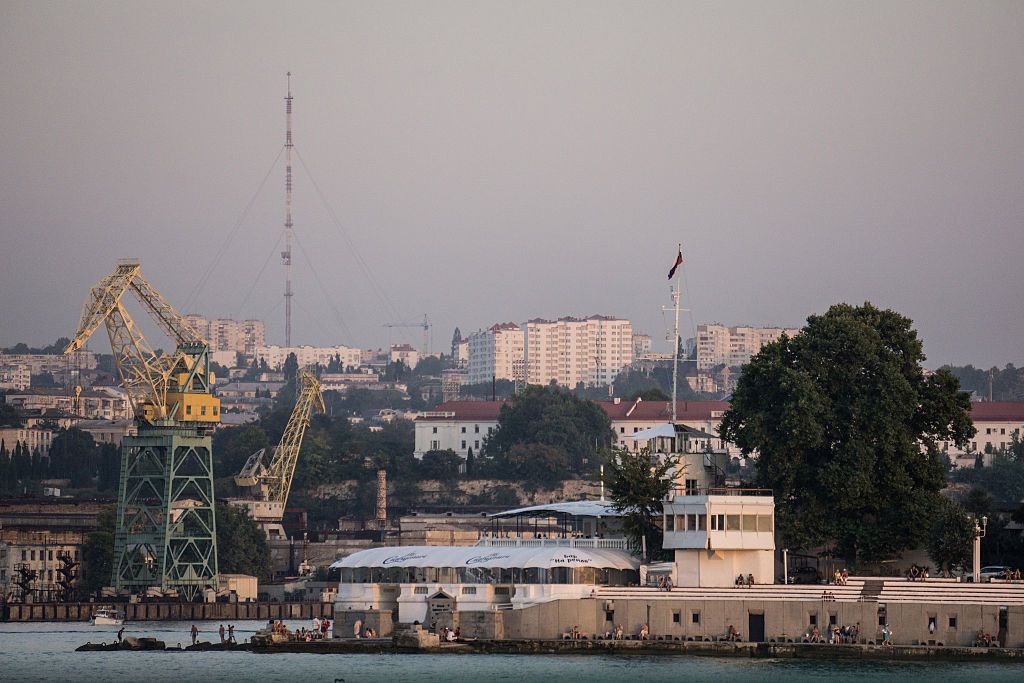On April 21, a missile was launched at the Russian Black Sea Fleet stationed in occupied Sevastopol, according to the city’s Russian-installed governor, Mikhail Razvozhayev. He claimed that an anti-ship missile had been repelled, causing a small fire that was quickly extinguished. Unverified video footage on social media showed a Russian naval vessel on fire, and local media reported the closure of the Crimea bridge. Ukraine’s military intelligence indicated that information about the strike was still being clarified, as Sevastopol is frequently targeted by Ukrainian missile and sea drone strikes. Russian forces in the region have been constructing barriers at the entrance to Sevastopol Bay to prevent further attacks.
The Russian Black Sea Fleet has been a target of Ukraine’s military strikes, despite its limited naval capabilities. Russia has faced challenges in defending its fleet, especially following Ukraine’s successful attacks on its major ships in occupied Crimea. In an effort to strengthen its defense, Russia has been redeploying its Black Sea fleet from Sevastopol to Novorossiysk port. The ongoing conflict between Russia and Ukraine is reshaping the conventions of warfare, with Ukraine’s military tactics disrupting Russia’s naval operations in the region. The systematic destruction of Russia’s Black Sea Fleet by Ukraine highlights the shifting dynamics of the conflict and the effectiveness of Ukraine’s unconventional strategies.
The situation in Sevastopol and the ongoing attacks on the Russian Black Sea Fleet underscore the intensity of the conflict between Russia and Ukraine. Ukraine’s use of missile and sea drone strikes against Russian naval forces has demonstrated its ability to challenge a superior naval power. Despite facing significant military challenges, Russia’s attempts to strengthen its defense in the region have not been entirely successful, as evidenced by the recent missile strike on the Black Sea Fleet. The evolving dynamics of the conflict highlight the importance of unconventional warfare tactics and the impact they can have on disrupting the operations of a stronger opponent.
The conflict between Russia and Ukraine is not confined to traditional battlefield scenarios but extends to unconventional tactics that exploit vulnerabilities in the opponent’s defenses. Ukraine’s targeting of the Russian Black Sea Fleet represents a strategic shift in warfare, as a comparatively weaker force employs asymmetric tactics to challenge a stronger adversary. The success of Ukraine’s military strikes on Russian naval forces in Sevastopol and Novorossiysk port reflects the changing nature of modern warfare, where unconventional methods can yield significant results. The ongoing conflict in the region is reshaping the dynamics of naval warfare and highlighting the importance of innovation and adaptability in military strategy.
The events in Sevastopol and the recent missile strike on the Russian Black Sea Fleet underscore the complex and evolving nature of the conflict between Russia and Ukraine. As Ukraine continues to challenge Russia’s naval presence in the Black Sea, the dynamics of the conflict are constantly shifting. The use of unconventional warfare tactics by Ukraine poses a significant challenge to Russia’s military capabilities, leading to the restructuring and redeployment of its forces in the region. The ongoing conflict highlights the resilience and determination of both sides, as they seek to gain strategic advantages in a protracted and multifaceted conflict. The strategic significance of the Black Sea region and the complexities of the conflict underscore the importance of independent journalism in providing accurate and timely information on the ongoing developments in Ukraine and its impact on regional security.


